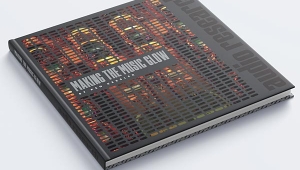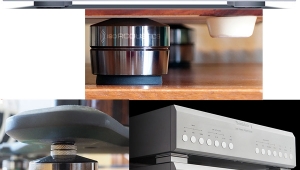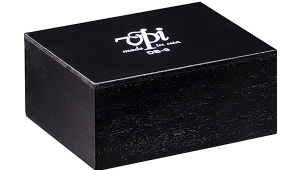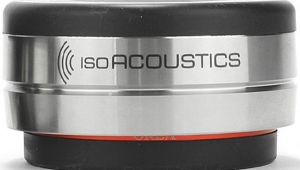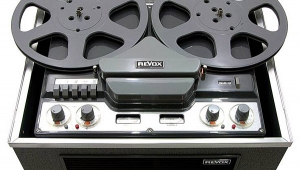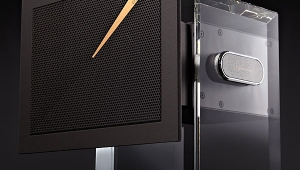| Columns Retired Columns & Blogs |
Bryston 10B electronic crossover Bryston 10B November 2005
Larry Greenhill wrote about the Bryston 10B in November 2005 (Vol.28 No.11):
The Bryston 10B ($2395) is an active line-level electronic crossover that features three balanced configurations: stereo two-way, monophonic two-way, and monophonic three-way. It comes in a slim black enclosure and is available in three versions. First is the 10B-SUB, which incorporates frequencies suitable to subwoofer applications (40Hz, 500Hz), and which I used for this review. Second is the 10B-Standard, more applicable for use with full-range speakers requiring frequency control in the midband and tweeter ranges (70Hz, 4.5kHz). Both of these include a mode called Mono Low Pass, which replaces the two-way Mono (Linkwitz-Riley) in the older models, such as the one reviewed in the May 1994 Stereophile (Vol.17 No.5, p.130). Third is the 10B-LR, a dual-channel Linkwitz-Riley active electronic crossover that uses plug-in programming cards to set the crossover frequency, and which retains the two-way mono mode, allowing steep eighth-order filters.
As Thomas J. Norton pointed out in Steven Stone's review of the Bryston 10B-Standard in May 1994, "A two-way crossover consists of two 'legs': the high-pass connected to the tweeter or satellite speakers (passes highs, hence 'high pass'), and the low-pass connected to the woofer or subwoofer ('low pass,' for the same reason)."
Physically, the Bryston 10B squeezes an amazing amount of control action into its slim front panel: switches for controlling high- and low-pass frequency output selections with ±5dB of gain for each stereo channel; separate high- and low-pass crossover frequency settings (40, 50, 60, 70, 80, 90, 100, 200, 250, 300, 400, and 500Hz); and filter slopes of 6, 12, and 18dB/octave. The high-pass output level can be continuously adjusted via a rotary control; there are two crossover-frequency rotary switches for high- and low-pass for each channel. In the center of the front panel are an On/Off button and three LEDs that indicate which mode the crossover is in: two-way stereo, three-way mono, or two way stereo plus R+L subwoofer output. The rear panel includes a sliding mode switch that selects Mono Low Pass, which sums the left- and right-channel input signals to form an L+R signal. This signal is fed to both low-pass filter sections, meaning that a common low-pass output can be taken from either of the low-pass outputs. This is how I set up the Bryston 10B-SUB for the Genelec HTS4B subwoofer.
In his review of the 10B-Standard, SS used the Bryston crossover to control and blend the ribbon drivers in a pair of full-range Apogee panel speakers, not to integrate a subwoofer into his system, as I did here. When SS inserted the Bryston's active electronic crossovers into the signal path, he reported a slight reduction in depth and a bit of an increase in "electronic edginess." However, he noted that use of the Bryston 10B-Standard led to "gains in dynamic contrast and power, bass extension, and driver control that more than compensated for such liabilities." John Atkinson, in writing up the Bryston 10B-Standard for "Recommended Components" in the October 1996 Stereophile (Vol.19 No.10, p.175), determined that its slight loss of depth and increase in electronic edginess kept it out of Class A.
Eleven years later, I have a better impression of the Bryston 10B-SUB. I heard no electronic edginess, even when using the active high-pass filter. The loss in soundstage depth was just noticeable, so I preferred letting the Quad ESL-989s run full range. Even with the low- and high-pass filters in the signal path, I found the 10B-SUB's sound clear, transparent, and neutral—as good as I've ever heard from an outboard crossover. It is extraordinarily versatile in managing crossover slopes and frequencies. I recommend it for use in high-end systems to which a subwoofer is being added.—Larry Greenhill
- Log in or register to post comments




